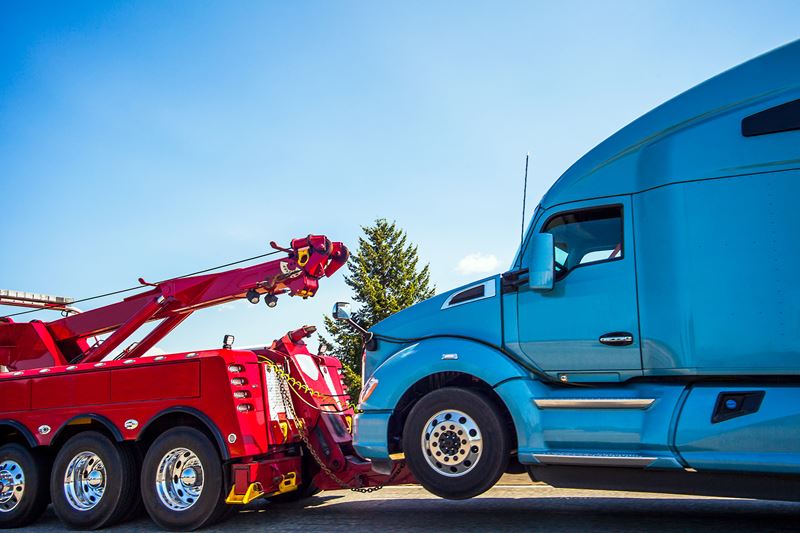Winter driving tips
Winter driving tips
When the winter months blow in, they can put even the most seasoned drivers to the test. Navigating snow, ice, slush, and decreased visibility is challenging, yet expected, during a Canadian winter. Fortunately, what you anticipate you can prepare for.
The principles of safe winter driving aren’t complicated – if you’re an experienced driver or fleet manager you’ve likely seen many of these tips before. But how many are you actively implementing? Drivers can stay safe in all kinds of winter conditions by adopting these best practices.
Plan ahead1
As the saying goes, ‘an ounce of prevention is worth a pound of cure’. Before you even turn the ignition, lay the groundwork for a safe drive.
- Check the weather forecast for your route and avoid driving in really bad conditions.
- Check provincial "Road Reports" for updates on road conditions along your route (511 Service is available in both French and English in most provinces).
- Plan your route in advance and ensure key parties, including your fleet manager and contact at your destination, are aware of your route and planned arrival time. Ensure your route follows main roads as these are most likely to be plowed and salted often.
- Assume delays. Don’t rely on estimated arrival times in your GPS. Allow extra time for your trip to take into account any route delays due to inclement weather, such as accidents, slow traffic, reduced visibility, roadblocks, etc.
Prepare the vehicle for winter conditions
Preparing your vehicle for winter conditions goes beyond switching to snow tires – but that’s certainly part of it! Other key preparations include:
- Remove snow and ice from your vehicle. Clear your vehicle – including your straight truck driver and tractor trailer – of any snow or ice before heading out on the road. Ensure all windows, mirrors and headlights are cleared as well as the top of your trailer/cargo box before you start driving. This is not only important for visibility, but also required by law for safety purposes as snow from your vehicle can fall or blow off, causing serious damage and potential injury to other vehicles on the road.
- Warm up before you go. Warm up your vehicle before driving to help reduce condensation on the inside of the windows. Un-fog all windows for clear visibility before you step on the gas. However, be sure to never warm up your vehicle in a closed garage as the buildup of carbon monoxide emissions can be very dangerous.
- Carry out a full pre-trip inspection of your tractor and trailer. While this should always be performed before any trip, it’s especially vital when winter driving conditions are expected.
- Check your tires. Winter tires provide additional traction in colder weather. Ensure your tires have proper traction for the conditions, as traction is the key to good movement, turning, and stopping on wet, slushy or icy surfaces. Check the tire pressure and if necessary, restore it to levels recommended by the vehicle manufacturer. The pressure drops about 1 psi for every 5°C (9°F) drop in temperature2.
- Test your brakes. A single brake out of adjustment can be enough to cause you to lose control of your unit. Ensure your brakes are checked regularly.
- Check your exhaust. Exhaust leaks can be extremely dangerous in winter, when windows are usually kept closed and poisonous gases can accumulate in the cabin.
- Lubricate your hitch. A fifth wheel that is not properly lubricated or lubricated with the wrong grade of lubricant can cause sticking and contribute to a loss of control.
- Top up your fuel tank. Keep your fuel tank at least half full.
- Clear your windshield. Top up your windshield washer fluid, using fluid that it is rated in the -40C temperature range, and replace wiper blades that streak as the use of worn windshield wipers can significantly impair your visibility.
Pack an emergency kit
If you get into an accident, get stuck, breakdown, or need to pull over for an extended period of time, you could find yourself in a dangerous predicament if you’re not adequately prepared. Every driver should have a properly stocked emergency roadside kit in their vehicle.
Use this checklist to help ensure your emergency kit contains all the essentials:
- Copy of your emergency plan
- Food that won't spoil, such as energy bars
- Water – in plastic bottles so they won't break if frozen (change every six months)
- Blanket
- Extra clothing, including a hat, wind-proof pants, and warm footwear
- First aid kit – with seatbelt cutter
- Candle in a deep can and matches
- Crank flashlight
- Roll of paper towels
- Whistle – in case you need to attract attention
- Roadmaps
- Warning devices such as emergency lights and warning triangles
- "Call Police" or other help signs or brightly coloured banners
- Small shovel, ice scraper, and snowbrush
- Sand, salt, or cat litter (non clumping)
- Traction mats
- Tow rope
- Properly fitting tire chains
- Antifreeze/windshield washer fluid appropriate for sub-freezing temperatures
- Fuel line de-icer (methanol, also called methyl alcohol or methyl hydrate)
- Jumper cables
- Fire extinguisher
Adjust your driving style for the conditions
No matter what the weather conditions, the difference between an average driver and a good driver is that an average driver reacts to situations on the road, while good drivers anticipate them3. Consider these best practices to anticipate all kinds of winter driving conditions:
- Slow down. Fog, black ice, slush, and snow-covered roads can make driving dangerous – so slow down! Speed limits are intended for regular weather conditions, so be mindful and ready to adjust your speed for the conditions at hand.
- Accelerate smoothly. When driving on snow and ice, smooth acceleration allows for the best traction. Spinning your wheels not only decreases traction but can cause a dangerous loss of control if you suddenly hit dry pavement.
- Brake gently. As temperatures rise and ice becomes more slippery, the best way to maintain control around a curve is to brake gently and allow for longer stopping distances.
- Read the colour of the road. White or grey roads may indicate ice or snow coverage, whereas shiny and dark roads could indicate black ice. However, don’t just rely on the road’s colour; when in doubt, slow down.
- Keep a safe distance. Leave plenty of distance between vehicles, especially small vehicles that can stop much quicker than a large transport truck.
- Don’t use cruise control. The use of cruise control on roads with icy patches can cause a skid or loss of control. Braking/cutting the fuel quickly is very important in these circumstances.
While these precautions can certainly help mitigate many winter driving risks, sometimes the best decision you can make is to call your dispatcher to let them know plans have changed, get off the road, and wait for conditions to clear. After all, safety is the top priority!
1,2Government of Canada, C. (2021, January 15). Driving Tips - Winter : OSH Answers. Retrieved January 15, 2021
3 Canadian Centre for Occupational Health and Safety. “Driving tips – winter”. Retrieved October 23



